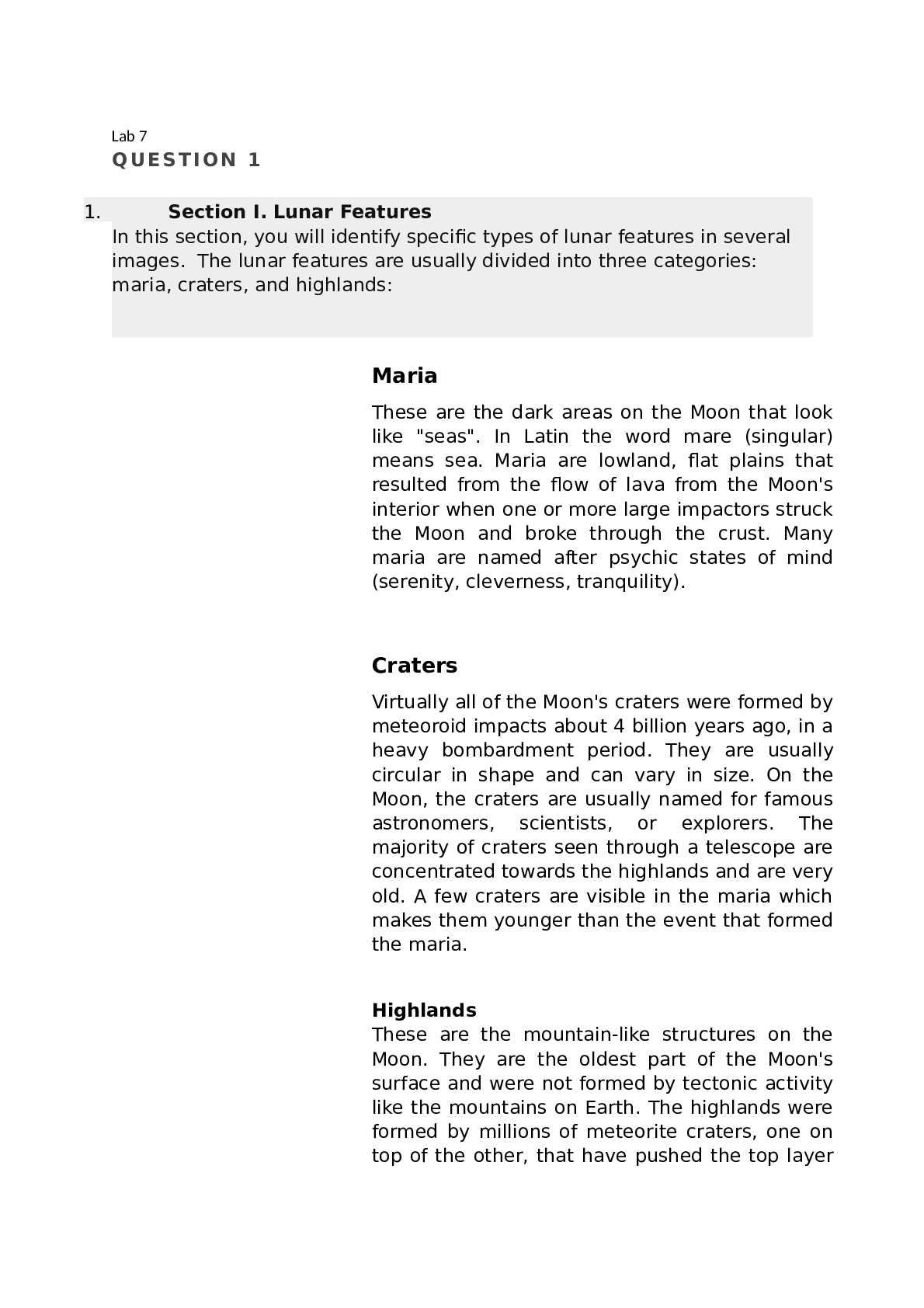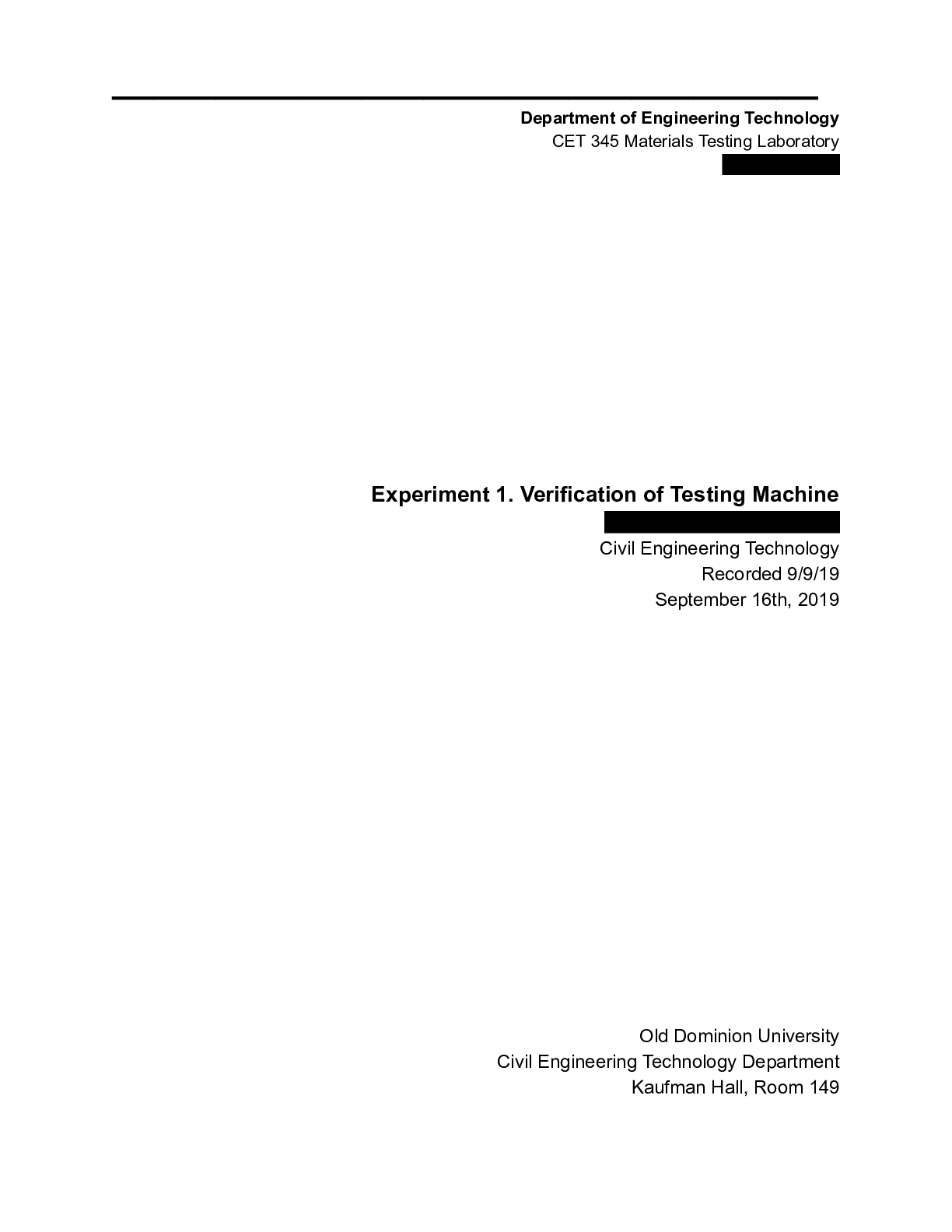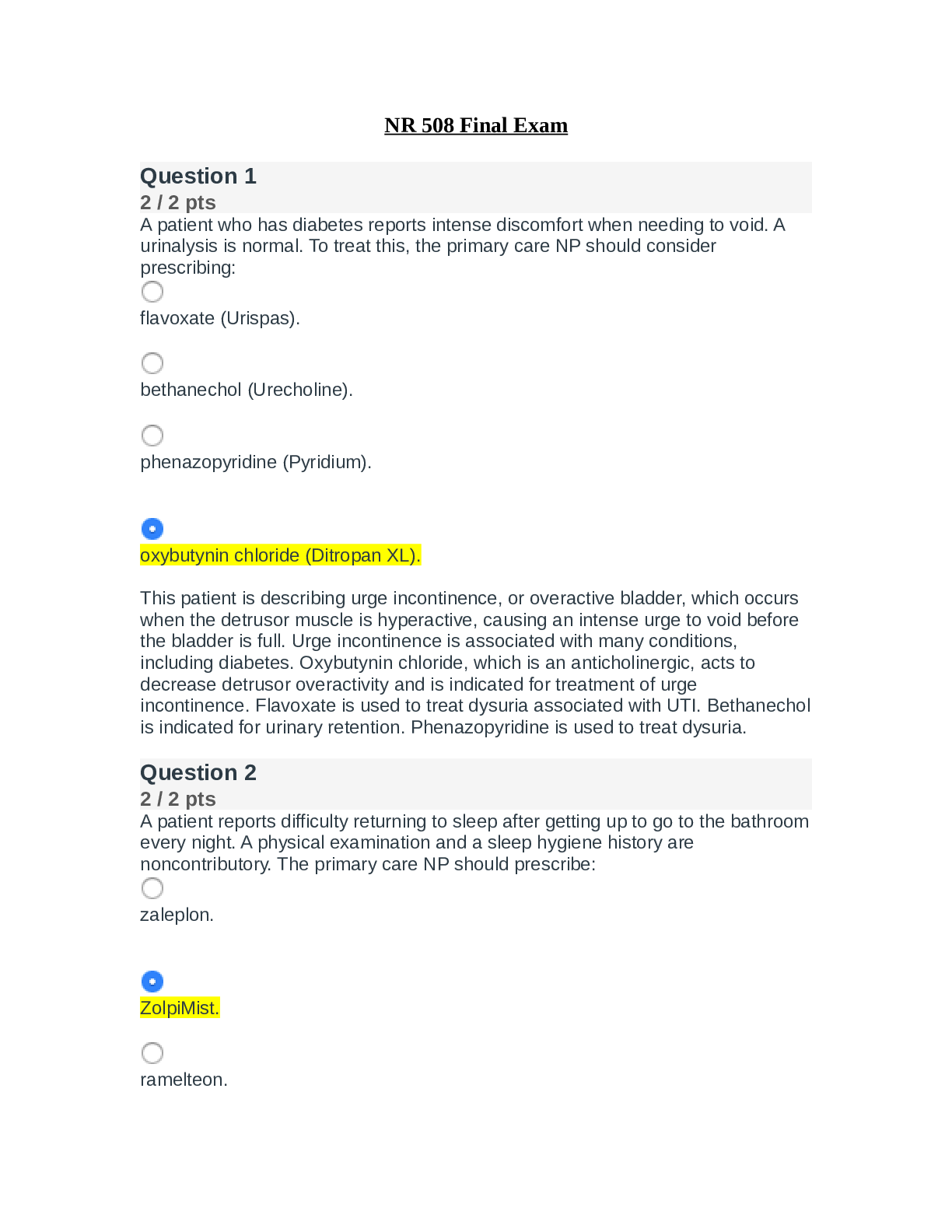Physics > Lab Experiment > PHYS 1155 Lab 2 Experiment 16 Electric Field and Electric Potential-REVIEWED AND VERIFIED BY EXPERTS (All)
PHYS 1155 Lab 2 Experiment 16 Electric Field and Electric Potential-REVIEWED AND VERIFIED BY EXPERTS-GRADED A
Document Content and Description Below
Report for Experiment #16 Electric Field and Electric Potential Ali Hussein Lab Partner: Cory Lafleur TA: Hamza Ahmed Monday, September 30, 2019 Abstract There exists equipotential lines, which... are lines found between a negative and a positive electrode, and the potential difference V remains constant throughout. And finding these lines, which form from oppositely-charged parallel electrodes and concentric electrodes, allow for the electric field to be calculated. It’s from this information, that the electric field between the two electrodes was found to be constant at 92.746 ± 3.256 V/m. This is a 7.254% error from the theoretical value, 100.000 V/m. And in concentric electrodes, the potential difference had showna logarithmic trend line in relation to distance from the center cylindrical electrode, that implied that the electric field was inversely proportional to the distance. So by comparing the measured electric field to the theoretical electric field, the average potential difference between the two equipotential lines was found to be -4.080 ± 0.001 V, which is a 12.670% error from the theoretical value -4.672 V. Introduction: The purpose of the lab was to comprehend the relation between electric potential and electric field by testing the electric potential and electric field interactions between two electrodes. Electric fields are regions around a charged object in which forces would repel similar and attract opposite charges. Electric potential describes the work per unit of charge; potential charges are represented in volts (V). Potential between objects can be mapped out using equipotential lines (as observed in Formula 1.1) where displays the difference of potentials over the difference in distance. The objective of the experiment was to investigate the characteristics of the electric potential and electric fields for 2-dimensional charge configurations in two scenarios. The first being in the first investigation which simulates the electric field and potential distributions on parallel plate capacitor. This investigation has the user place two brass electrodes on conducting paper (with power supply and voltmeter) so they can then use a probe tipped wire to mark lines at specific volt charges (1V, 2V, 3V, etc.). The scenario in the second investigation simulated fields between charges on infinitely long cylinders with respect to both the electric field and potential. In this investigation, a cylindrical brass electrode surrounded by a circular electrode (with power supply and voltmeter) are set up and the user is tasked with identifying circles at specific volt charges (equipotential lines) using a probe tipped wire. Starting with the first investigation, the relationship between the equipotential lines and measured distances from the electrode solved for the electric field (as seen in Formula 1.1; also represented by Formula 1.2 indicating electric field as a magnitude). Then the user is asked to calculate the average position using Formula 1.3, and the relation between the electric field and average position gives the electric potential represented by Formula 1.4. The error of electrical field is found using Formula 1.5 The initial measurements for investigation 2 are the same as investigation 1 (indicate volt charge at equipotential lines and their distances from electrode; this time it is the central electrode), but since the equipotential lines are circles, the distance from the electrode is found along each coordinate axes and averaged together (using Formula 2.1). The error for the average radius for the equipotential line is found using the standard deviation (Formula 2.2). And to solve for the theoretical potential at the equipotential line, as seen in Formula 2.3, the initial potential at the central cylinder (V0 = 10V) is multiplied by, the logarithmic difference between the radius of the circle electrode and the radius of the respective equipotential line over the difference of the radius of the circle electrode and the cylindrical electrode. The electrical field was found using Formula 1.1; taking the measured distance from the average radius. To solve for the theoreticalelectric field, first the user finds its location which is halfway between equipotential lines, found using Formula 1.3; its error found using Formula 1.5. And the electric field is found using Formula 2.4, taking the initial voltage over the logarithmic difference of the circle electrode radius and the cylindrical electrode radius, all multiplied by the reciprocal of the average radius. E❑ x= −ΔV Δ x = −V ❑ b−V ❑a x❑b−x❑a (Formula 1.1) E=constant (Formula 1.2) x❑ avg= x❑ a+x❑b 2 (Formula 1.3) V (x)=Ex (Formula 1.4) √❑ δ z=¿ (Formula 1.5) r❑ avg= (r❑1+r ❑2+r❑3+...r❑n) n (Formula 2.1) σ=√❑ (Formula 2.2) [Show More]
Last updated: 1 year ago
Preview 1 out of 12 pages

Reviews( 0 )
Document information
Connected school, study & course
About the document
Uploaded On
May 28, 2021
Number of pages
12
Written in
Additional information
This document has been written for:
Uploaded
May 28, 2021
Downloads
0
Views
51













.png)


.png)
.png)













.png)





